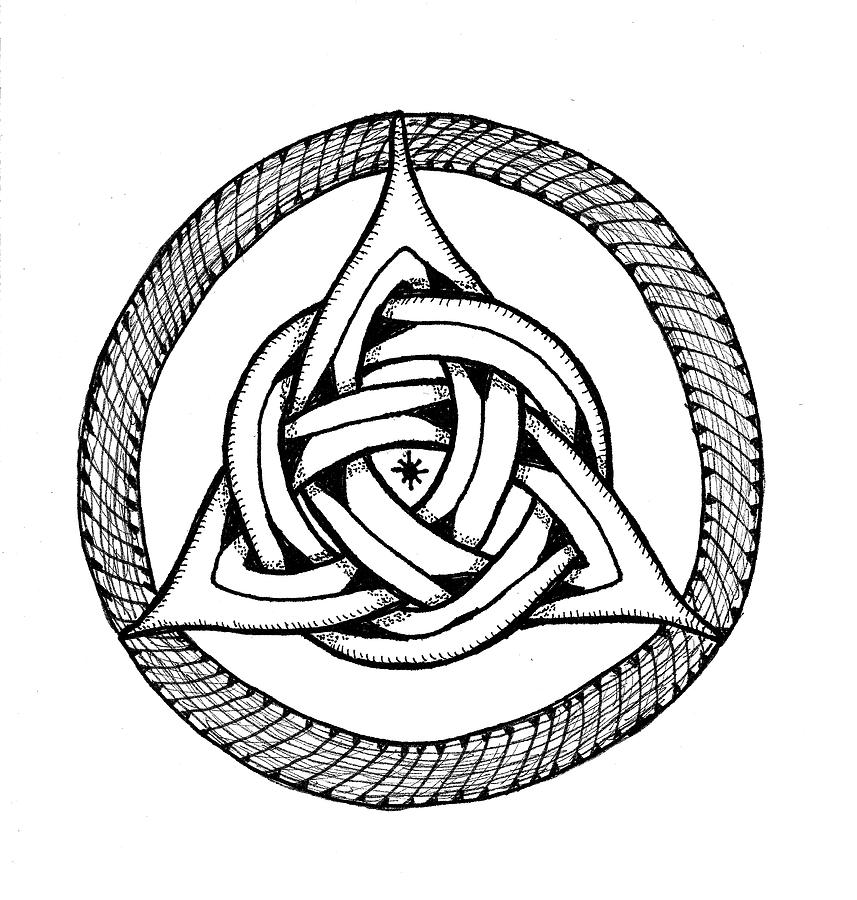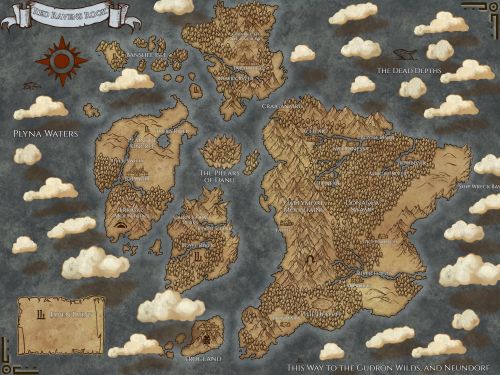The Celta Clans
Nature, in its most primitive beauty
Structure
The Warrior Chief rules with a council of druids known as the Turthseers to aid him or her in decisions to keep the people safe from the many hazardous conditions of the isles and also helping with the daily affairs of the tribes
Culture
The culture of the Celta clans is one of kinship, battle, and mead. Many citizens return home from long days of working drinking merrily and singing of old tales and complaining about trivial matters. The isles breed strong folk, and so both the men and woman are strong, for all must be able to fight off invaders or dangerous wildlife. Druids are an important aspect of life amongst the Celtans, for the druids help keep the land healthy and safe. Hunting and sport is also a popular past time of many Celtans, for to wear animal hides is considered a sign of strength, so much so many warriors may charge into battle wearing nothing but animal hide or cloaks, for what have they to fear of death if they are so strong.
War is a constant amongst the Celtans, for many invaders seek to force them to give up their isles secrets, but the people know that to do that would shame them all unimaginably. So they resist any forms of foreign occupation. This goes to such an extant that they've even scarred off a few merchant ships, mistaking them for invasion ships. While they view foreigners with suspicion, adventures are mostly welcome so long as they can keep an eye on them. This war like view also extends to each other, for the tribes of the Celta regularly fight with one another. So much does this obsession with battle go that battle of any kind is celebrated, weather its fighting in a grand war, a simple bar fight, or even a simple arm wrestling match. The most curious showing of this warrior like culture is the Sarhaed, a man/woman's honor price. It is quite literal the direct monetary marryingmust paywhichcancan
Life on the isles is harsh indeed. While the mist helped protect the island from invaders, it also brought the many strange creatures of the isles that now inhabit the land. Hunters regularly have to be careful or else they will run into the swamp monsters and strange nature bound creatures of the land. This is all because ever since the isles were touched by the goddess Danu, the wild and chaotic state of nature permeates the misty isles. This harsh living environment, as well as having to have fend of foreign invaders from the elves of the Empire of Iadith, to the Vikingir of Aldinnheimr, to countless other explorers or conquerors seeing the people of Red Ravens Rock as "simple and weak tribals" leads the people of the Celta to be hardy and strong. Though a curious development in recent years is now druids of the Celta seek to travel the world and discover secrets of nature in the other nations and empires of the world.
History
Due to the nature of Celtan history being told down through oral tradition, the exact history can be quite hard to get exact wisdom from, but some historical accounts do exist, mostly written from foreigners who have had contact with the Celta. The first real recordings of the Celta begin with the occupation of the island by the High Elven Empire of Iadith. The empire occupied the land to act as a staging ground for their excursions into the rest of the world, but this would also serve as first contact between humans and elves. The tribes people of the Celta clans were amazed but weary of these outsiders, who they saw as invaders of their land. Throughout the years, a peculiar subset of the high elves who would become known as "wood elves" would emerge and teach the Celta Clans about the elven goddess of nature. The tribespeople were amazed by this revelation and it is said all would bow in reverence once a powerful wood elf druid would call down the power of the Nature goddess, now locally called Danu, to bless the land with the truest embodiment of nature, casting a magical mist that protected the island form most invasions. After this, some thousand years later the wood elves and Celta would become fiercely independent, and would then seek to fight off the occupying Empire. The first battles would go terribly, as they had a hard time matching the elves war power, but they made up for the lack of professional soldiers with sheer willpower. Then during the 10 year war for the isles, came the hero known as Cú Cranait.
The tale of Cú Cranait is a long, dramatic, and widely famed story, but in the end, Cú Cranait would use her demi god like powers to drive off the armies of the Empire in one grand battle, at one point when she was struck with a lethal blow she tied herself to a stone pillar with her own entrails and kept fighting. This would lead to the Celta Clans gaining independence and they would separate into tribes, From then on, the powerful druids would work to maintain the mist and to heal nature wherever it was destroyed, while also upholding the teachings of how nature is chaos, and nature is war. They would suffer many more invasions over the years, from the invasion of the Northmen which would result in many cities being pillaged and a large swath of land falling under Vikingir control until eventually being repulsed by the Celta. They would also suffer another attempted occupation by the Empire of Iadith, but that was quickly repulsed by the Celta. However, a curious development of late is since the ending of the Crusade of Light, the thick mist surrounding the island has gone away, and the druids do not know why. While the druids are able to maintain the mists on the mainland, this leaves the isles open to the outside world. This is both a blessing and a curse, for some nations are genuinely curious of the Celta and seek to trade and understand them, with Tajir becoming good friends with the strange tribespeople as a beneficial trade partner. However this also means they are open to invasion once again, with being able to land on the island now easier thanks to the weakening of the mist. However the people of Red Ravens Rock are a hardy people, and thousands of years of war has lead to every man and woman of the Celta Clans being ready to defend their home and tribe no matter the odds, and without an ounce of fear in their hearts.
Demography and Population
The isles of Red Ravens Rock have mostly humans and wood elves, but a few dwarves have also called the land their home. There is also a population of Centuars, children of the goddess Danu, that have earned their place amongst the people as trusted friends and terrifying warriors. There are also giants among some of the mountains and forests but they largely keep to themselves, however a few proudly serve in the many warrior armies of the Celta Clans. There is also a small contingent of strange creatures known as Sidhe, strange immortal creatures who are pure elemental forces given humanoid form, their form resembling something akin to an elf. They are said to have been made around the times of a great war between magical wizards and the Celta some 100 years after the formation of the United Celta Clans. They only appear when guarding some magical sites or fighting in the armies when the need is most dire.
Territories
The Celta Clans own the Isles known as Red Raven Rock
Military
In war, untold glory can be earned, for war is nature, and Danu cherishes war. While in battle, the measure of success is measured not in the amount of loot they are able to take form the defeated enemy, but how many heads they can collect from their fallen foes. Collecting ears is also a common practice, with the ears of hostile high elves and moon elves being the most cherished. When in battle, they make use of mass waves of warriors as well as large creatures such as giants and half giants, and also use great beasts as war machines. Druids can also bind and summon powerful swamp creatures and other strange creatures of nature to fight off enemies or rival tribes.
Technological Level
Curiously, the druids of Celta seemingly refuse any and all advancement beyond what the celta already have, resulting in slow rates of innovation. It is rare indeed for new inventions to crop up in the isles, and most curiously this is done by choice, for the average celtan wouldn't dare upset Danu by ignoring her words as told by the druids to simply live a more comfortable life
Religion
The Celtans are a deeply spiritual and religous people, and so everyday the Celtans pray to the gods for what they need. The goddess of the most worship by the Celta is an offshoot of the wood elven goddess of nature, who the Celta refer to as Danu. Danu is the goddess of the earth and nature itself, while also being a goddess of fertility, war, and also of the moon. The second most popular is Carnun, the Hunter god, depicted as a horned god. Hunters bless him for good catches as they fight to feed and protect their tribes. He is also a very joyous god, who is mainly worshipped through dances and festivals
Foreign Relations
Relations with the Celtans, is shaky at best. The Celtans are distrusting of outsiders, and for good reason, for they have been raided by others semi frequently. This doesn't stop other kingdoms from attempting to make good relations, for the magic of the isles is said to be strong, and many wizards seek to travel there to learn their ways of magic. The Celtans also hold fairly amicable relations with the wood elven kingdoms, for despite their distance they both believe in the same goddess, with the differences simply being as a result of different cultures, and at the end of the day both view life as an inherent fight for survival
Agriculture & Industry
Due to the tribal nature of the Celta, and the seemingly staunch refusal of advancement to preserve the old ways, the Celta Clans remain an agricultural people

"Burn like a star, so that our saga is song!"
Type
Geopolitical, Clan
Alternative Names
The Children of Danu
Demonym
Celtan
Government System
Tribalism
Power Structure
Federation
Economic System
Traditional
Legislative Body
The Tribes War Leader or King make sthe laws of the tribe
Judicial Body
A council of druids known as "the Watchers" enforce the laws of the tribe and deal with everyday crimes
Location
Official Languages
Controlled Territories
Notable Members



